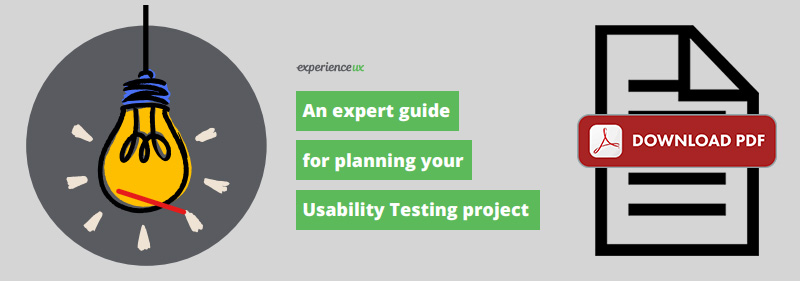Sometimes questions are more important than answers
What is customer profiling?
Customer profiling is a way to create a portrait of your customers to help you make design decisions concerning your service. Your customers are broken down into groups of customers sharing similar goals and characteristics and each group is given a representative with a photo, a name, and a description. A small group of customer profiles or ‘personas’ are then used to make key design decisions with, e.g. “which of these features will help Mary achieve her goals most easily?”

Customer profiles are a useful design tool
Customer profiles are ‘customer types’, which are generated to represent the typical users of a product or service, and are used to help the project team make customer-centred decisions without confusing the scope of the project with personal opinion.
Also known as personas, customer profiles are created from an understanding of the typical audience generated from customer research, and focus on the different goals and scenarios the customers might find themselves in when interacting with a specific touch-point (website, catalogue, shop floor etc.). Unlike typical demographics or segmentation, differences in geography, income, status, etc. do not necessarily split customers into different groups. For example, when looking to buy the latest CD by The Kooks for a nephew, a 24-year-old single mother of three living in the south of England will use Amazon in the same way that a married 53-year-old senior executive living in the north of England would do. Their goal is the same, to buy a specific CD online quickly and easily.
When creating a profile the critical information needed for each user is their goals (why are they interacting with the touchpoint? – to buy a CD), their tasks (what will they be doing when they interact with the touchpoint – browse for The Kooks CDs, purchase the latest CD, arrange delivery to a different address?), and the touchpoint goals (to sell a CD, clearly show which of The Kooks CDs is the latest, cross and up-sell, etc.). For the example above, in a very loose manner, you might create a profile called Jane, who is 31, married, has three young children, is time-poor, and needs to buy The Kooks CD online, but doesn’t know who The Kooks are or what their latest CD is called. Jane will represent all the users who want to buy a specific product but are unsure of all the details.
Advantages of customer profiling
Most projects evolve from an idea and grow through the opinions of influential members of the project team. The trouble is that these influential members of the project team are rarely the end-user or customer. This often results in a product or service that doesn’t quite meet customer expectations or needs, and the interaction with it might be clumsy. Similarly, the decision-making process can be delayed due to a clash of different opinions, with no member of the project team able to make a definite agreement on whether X or Y is best for this project.
So when the project team is discussing the scope, or making design decisions, they can talk about whether Jane’s needs and expectations are being met, regardless of what the influential project team member might deem as a ‘cool’ piece of functionality.
Disadvantages of customer profiling
Traditional marketers often react negatively to the suggestion of customer profiling because it does not cater for the standard demographics that are traditionally used and taught. However, in this situation, it is important to explain that profiles are not designed to replace general marketing demographics, which are used for Macro marketing and advertising campaigns but are created for the specific touchpoint (website, kiosk, catalogue, etc.) as a design tool for the project team to make better decisions.
Conclusions
Customer profiling should be undertaken to provide information and inform the project team about the end-users and/or customers to allow project decisions to be made from the typical user’s perspective, or to assist the project team in making customer-centred design decisions, which will result in a product or service that better meets the customer’s needs and expectations, and is, therefore, more likely to succeed.
You may also like:
More UX Methods Questions
Usability testing is a way to see how easy to use something is by testing it with real users. Users are asked to complete tasks, typically while they are being observed by a researcher, to see where they encounter problems and experience confusion. If more people encounter similar problems, recommendations will be made to overcome these usability issues.
User-centred design is a process or set of tools used to design a service which focuses on what users need at the very beginning and continues throughout development until launch. Typically services are designed from a technical and business perspective, with consideration for users added in later. Instead, User-centred design ensures the service focuses on what users need before balancing this with the technical and business requirements.
Wireframing is a way to design a website service at the structural level. A wireframe is commonly used to lay out content and functionality on a page which takes into account user needs and user journeys. Wireframes are used early in the development process to establish the basic structure of a page before visual design and content is added.
Website prototypes are interactive demos of a website. These are often used to gather feedback from project stakeholders early in the project lifecycle, before the project goes into final development
User requirements capture is a process used to understand what typical users will need from a service which is about to be designed. Users are observed using similar services and interviewed about the ways they go about planning and completing their goals. This information is used to identify a list of content, features and functionality the new service must have in order to satisfy the needs of its users.
Customer profiling is a way to create a portrait of your customers to help you make design decisions concerning your service. Your customers are broken down into groups of customers sharing similar goals and characteristics and each group is given a representative with a photo, a name, and a description.
Card sorting is a technique that involves asking users to organise information into logical groups. Users are given a series of labelled cards and asked to organise and sort them into groups that they think are appropriate. Card sorting helps you to design an information architecture, workflow, menu structure or website navigation paths.
A user journey is a path a user may take to reach their goal when using a particular website. User journeys are used in designing websites to identify the different ways to enable the user to achieve their goal as quickly and easily as possible.
Focus groups are a research method used to gather feedback and opinions from customers. Each person in the group is encouraged to participate in a discussion which is pre-planned by a researcher and is guided by a facilitator. Focus groups are typically used to gauge opinion and gather information from users about products, services, and features before they have been developed.
Remote usability testing is a way to test how easy to use a website is with users who are in a different geographical location. Traditional usability testing brings users and researchers together in one place to conduct the test, whereas remote usability testing allows the researcher and user to be in different locations while the test is completed.
An expert review is where a usability expert uses his/her knowledge and experience of testing websites with users to walk through a website in the shoes of a typical user. The expert will spot problems and recommend changes to improve usability when budgets and timescales don’t allow for user research.
Service design makes a service easier to use, more useful and more desirable for the customers who need to use it: the service user. Whether creating an entirely new service or improving an existing one, service design focuses on what customers really need at each stage of their interaction with an organisation.
Ethnography is a study through direct observation of users in their natural environment rather than in a lab. The objective of this type of research is to gain insights into how users interact with things in their natural environment.
Tree testing is a way of evaluating a proposed site structure by asking users to find items based on the sites organisation and terminology. This online test only displays the navigation links and removes any additional clutter.
Find Out More
Let’s Chat
If you’re ready to introduce the innate power of human centeredness to your products, services and brand, drop me an email today.
01202 293652 alicarmichael@experienceux.co.uk

